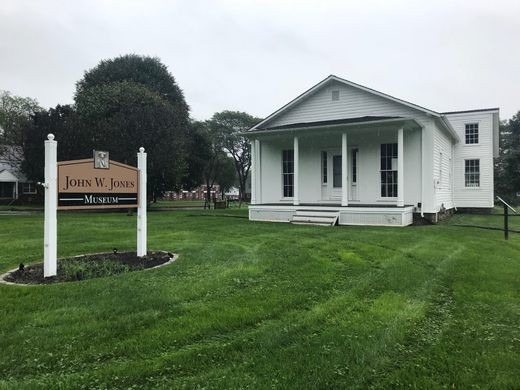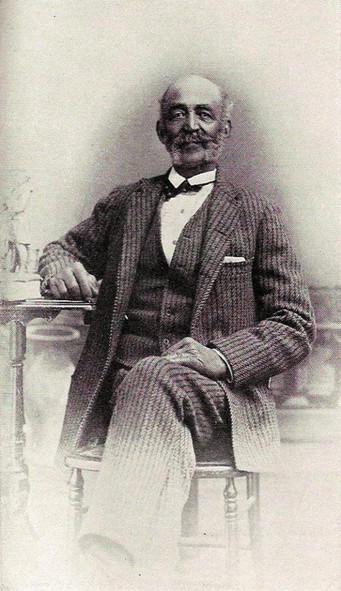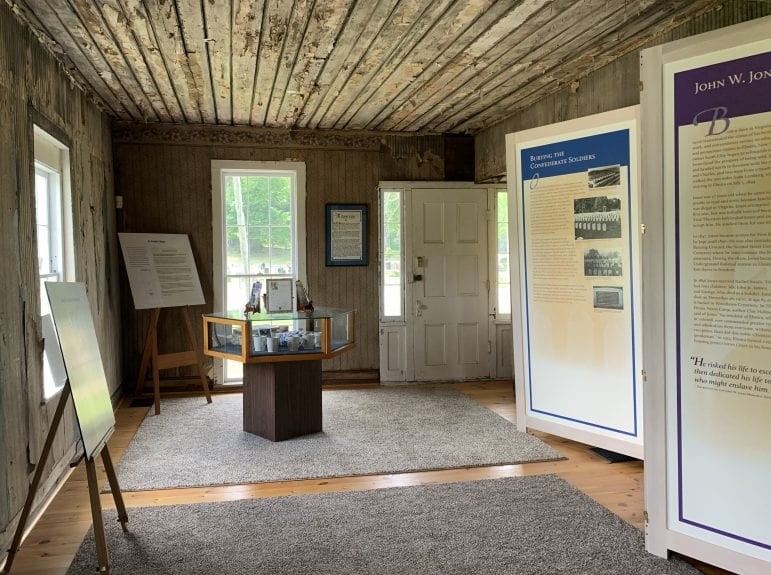John W. Jones House & Museum
Introduction
Text-to-speech Audio
Upstate New York is home to many sites associated with the Underground Railroad. One such site is the John W. Jones House in Elmira. Jones was born a slave on a plantation in Leesburg, Virginia, but escaped and made his way north to freedom in 1844. At the time, Elmira was a significant center of abolitionist activity and many fugitive slaves sought safety there. Once established in Elmira, Jones eventually became sexton at the First Baptist Church, and earned enough money to buy a home. The Jones House is listed on both the State and National Registers of Historic Places.
Images
The John W. Jones House & Museum

John W. Jones

Part of the home's interior

Backstory and Context
Text-to-speech Audio
John W. Jones was born a slave in Leesburg, Virginia, in 1817. His experience of slavery was perhaps atypical; his owners apparently treated him well and were fond of him. But as his owner, Miss Sarah (Sally) Ellzey aged, she began to give up her property. Afraid that he would be sold, Jones and some other slaves on the Ellzey plantation decided to run away in June of 1844. After a month on the run, Jones and his companions made it to Elmira, which was then known as a center of abolitionist activity.
Always industrious, Jones quickly found a variety of jobs, including cutting wood and working as a janitor. With the help of Judge Arial Standish Thurston, who befriended him, Jones was able to get an education, attending classes in the winter months and working during the rest of the year.
In 1847, Jones obtained work as a sexton at the First Baptist Church, which was founded in 1829 as the First Baptist Church of Southport and Elmira. He held the position for 42 years, and through this and other jobs, Jones was able to save enough money to purchase a home in 1854.
The home, which he purchased for $500, was located near a railroad station and on the church grounds, and because of this, Jones frequently encountered fugitive slaves. He eventually became very active in the Underground Railroad, assisting runaway slaves who arrived in Elmira by rail by providing them with food and shelter. Elmira was one of the most important stations on the Underground Railroad, and Jones was one of the Elmira residents most involved in aiding escaped slaves. It is estimated that he helped roughly 800 escaped slaves in their journey to freedom. His home, now a museum, became an important station on the Underground Railroad.
Jones’s significance to history didn’t end with his work on the Underground Railroad. As caretaker for Woodlawn Cemetery in Elmira, Jones was responsible for the burials of hundreds of Confederate prisoners of war who died at the dreaded Elmira Prison Camp. Jones kept highly detailed records of each burial and ensured that each soldier was laid to rest with dignity. Because of his meticulous record-keeping, the federal government declared Woodlawn a national cemetery in 1877.
Sources
The John W. Jones Story, The John W. Jones Museum. Accessed January 19th 2022. https://www.johnwjonesmuseum.org/the-john-w-jones-story
John W. Jones Museum, Atlas Obscura . Accessed January 19th 2022. https://www.atlasobscura.com/places/john-w-jones-museum.
Forstadt, Jillian. At an Elmira Museum, the Push to Turn an Abolitionist's Legacy into a Landmark, WSKG. June 17th 2021. Accessed January 19th 2022. https://wskg.org/news/at-an-elmira-museum-the-push-to-turn-an-abolitionists-legacy-into-a-landmark/.
